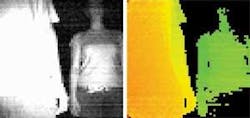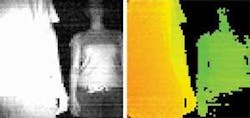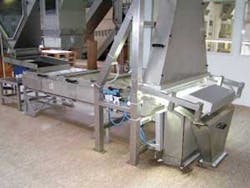Snapshots
3-D system guides wheelchair, wins design competition
An imaging-based wheelchair collision-avoidance system may help people with cognitive disabilities gain increased mobility and feelings of independence. The 3-D imaging system was developed by researchers at the University of Toronto and won the $10,000 top prize in a design competition sponsored by Canesta (Sunnyvale, CA, USA; www.canesta.com) to implement the company’s electronic perception technology-a CMOS-based single-chip technology that uses a time-of-flight principle to determine the distance from each pixel in the array to the corresponding feature in the scene.
The Nimble Rocket wheelchair was developed by Jesse Hoey and colleagues from the university’s intelligent assistive technology department and the departments of rehabilitation sciences and computer science, along with the laboratory for computational intelligence at the University of British Columbia. After constructing an occupancy grid map from a depth image (right figure) of a scene, the system directs the wheelchair to stop before collisions and suggests alternatives for mobility.
The $5000 prize was won by Matei Ciocarlie of the department of computer science at Columbia University (New York, NY, USA). The design integrated the Canesta sensor with a robotic arm and a grasping simulator to work in unstructured environments by detecting, tracking, and modeling objects. Contestants fit in several categories: robotics, assisted living for handicapped, security and facial recognition, and industrial applications.
Tea sorted by selective vision system
After harvest, herbs and tea plants become mingled with foreign material such as grit, stems, and plastic that must be removed before packaging. Traditional sorting methods have failed to yield satisfactory purity or discarded too much valuable material. Researchers at the Fraunhofer Institute for Information and Data Processing (IITB; Karlsruhe, Germany; www.iitb.fhg.de) working on behalf of health-product manufacturer Salus Haus (Bruckmühl, Germany; www.salus.de), have solved this separation problem by adding a high-speed vision system to the optomechanical sorting process. “The process used for separating waste glass or bulk minerals has now been applied to herbs,” says project manager Kai-Uwe Vieth. “Only 1% of useful material is lost.”
Dried and shredded plants are shaken to distribute them evenly on a conveyer belt. This layer is imaged by a 2k RGB linescan camera and the images transferred to a custom-made frame grabber and analyzed by software written by IITB. If the color range of an object falls outside the specified range, then the system checks its geometry. If this exceeds a specified length and width, the system activates the appropriate nozzle to blow the object into a receptacle. Tea producers have been able to purify 100 kg of plants an hour in the pilot plant, and a demonstration plant has been set up in Karlsruhe to interest other herb-processing firms.


